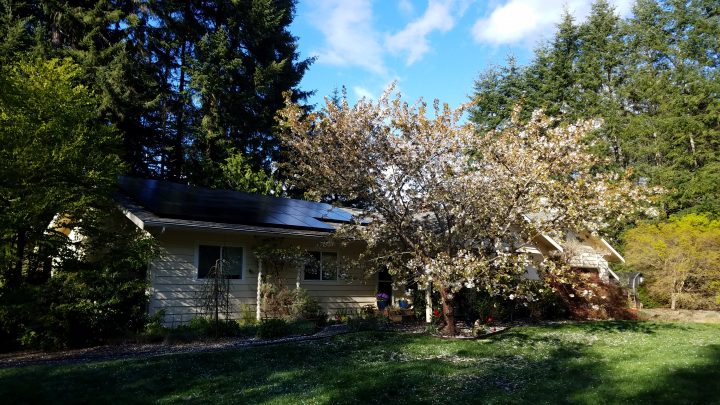This statistic in itself is not new, and Solstice arrived at this number using simiilar methodolgy I have seen used to yield similar results in the past. They are considering homeownership, shade vs solar resource, credit worthiness, and local regulations. Credit to their article, link is here – https://solstice.us/solstice-blog/why-americans-cant-access-rooftop-solar/
Our original quick and easy estimate of houses with roofs that could install solar on the Olympic Peninsula came from our friend Jake Wade, who used to work for PSE. He guessed that 1/3 of the homes were owner-occupied by people with good credit, and that 1/3 of the homes had a good sunny roof – yielding 1/9, or 11% of homes here being good candidates for solar arrays. Other estimates often yield a slightly higher potential percentage. Currently in Jefferson County, about 2% of all electrical meters are net metered, indicating we could increase the number of solar arrays by a factor of 5 to 10 times, and that is our goal.
Community Solar in WA – past and future
For the remaining ~80%, many people support the idea of Community Solar. This is a structure in which many people buy shares of a large array, and get the proper credit on their electric bill, the benefit of whatever portion of the larger array they own. Community Solar has seen a couple of iterations so far here in Washington State, neither of which was easy to put together. We installed two such projects, one of which we developed ourselves, with a team of fantastic partners, all figuring it out as we went, hoping to develop a project design and manual that others could replicate. While the project itself was a success (if we don’t count only dollars and not the time and value of countless hours of work on development, we will count that as education), we did learn that we didn’t think the laws and programs in place at the time supported healthy community solar projects, so did not accomplish our goals of developing a replicable project. The second project was installed for Clallam PUD, and was their baby, well-executed. We just helped promote a bit, and performed an inexpensive, efficient, aesthetic installation.
At this point, to my understanding of what is in place at the state level, any utility could develop a community solar project any time, and design the program and pricing as they see fit. There are no special state incentives at this moment, and utilities are mainly tasked with providing reliable and inexpensive electricity, and they really focus on that which they should. So it is not a surprise to me that we don’t see utilities developing new community solar projects at this moment. There will be new and improved legislation proposed in Olympia in the spring, and this moment will require ingenuity to find positive paths towards some economic recovery – just exactly what is available in community solar programs. We will let you know more about those efforts soon as they firm up.
Today – Solar for your Home
In the meanwhile, if you are one of the 20%-ers that has a good sunny roof on a home you own, and sufficient funds or credit to make this investment in your home, there has probably never been a better time to make that investment in solar. There is a 26% federal tax credit available through the end of the year, next year it becomes 22%, and then gone after 2021. In times of uncertainty, we know the sun will rise tomorrow and that investments in your self and your home are a safe and wise choice.

11.7 KW – Bremerton Residence – 2019